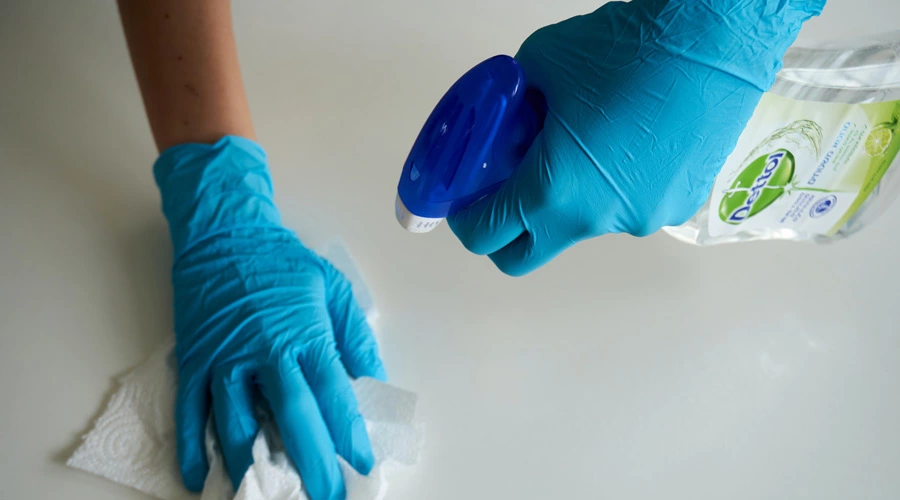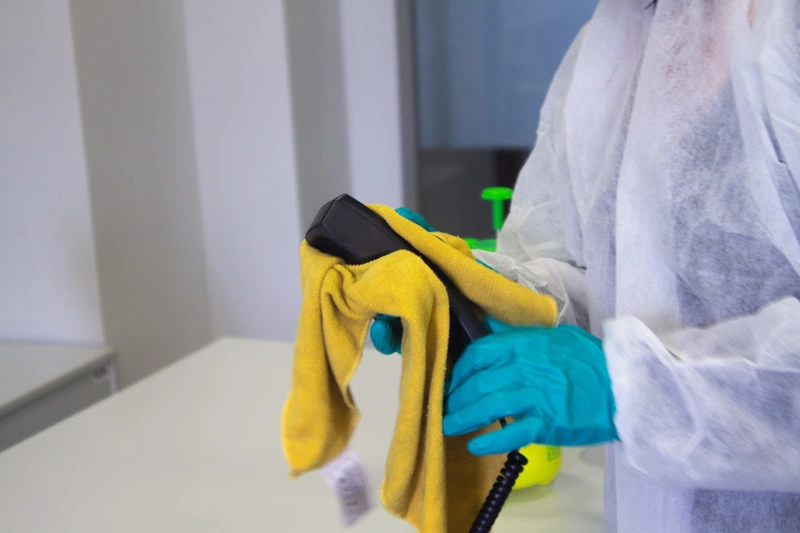Have you ever wondered which is the correct order of the steps for cleaning and sanitizing?
Sanitizing and cleaning are essential procedures, particularly in public and commercial settings where infections can spread quickly. Even if you regularly clean and sanitize, it might not be done in the most effective way possible all the time. This is because many people don’t understand the correct and proper way to clean and sanitize.

Every environment may need more specific steps to ensure the best results for sanitizing and cleaning. For example, a commercial kitchen, should be sanitized and cleaned based on the enforced guidelines and laid out by the different local and state government agencies.
These guidelines will help ensure that there will be improved consumer safety and maximum effectiveness. This is why it is vital that you under the proper steps required to make sure that there is a more effective sanitizing and cleaning.
What are the differences between sanitizing and cleaning?
Even though many people use the words cleaning and sanitizing interchangeably, there is actually a huge and significant difference between the two.
By literal definition, cleaning is the physical act of wiping away stains, grime, and dirt from any surface or area. This also includes dusting, vacuuming, and other similar acts that are designed to make areas look more appealing in general.
Cleaning is usually aesthetic in value alone. This doesn’t mean that you have sanitized the area or got rid of the bacteria and germs there. While most people clean their houses regularly, they still leave behind lots of germs and bacteria.
Good examples of cleaning products are detergents, solvents, acidic cleaners, and abrasive cleaners. Most of these products can do their job although they may also contain dangerous chemicals that could pose some threat to consumers as well as their pets.
Experts claim that these can be especially dangerous for kids and pets since they are in closer proximity to the places where such products are applied or used. Due to their smaller body organs, it is also less likely for them to resist and fight off the possible dangers that these cleaning products may pose.
On the other hand, there are various kinds of sanitizers. To make things more complicated, the term “disinfect” is usually interchanged with “sanitize” most of the time. However, these two words actually have different meanings.
When you disinfect a surface, you can kill certain types of microscopic organisms. The specific organisms that a product can kill are going to be different and this will be indicated on the product label. Different types of disinfectant products don’t necessarily kill all kinds of harmful organisms.
On the other hand, the main purpose and function of sanitizing are to dramatically lower the growth of viruses, fungi, as well as other kinds of dangerous bacteria. Although you might have already thoroughly cleaned a surface, it is still important that you sanitize if your goal is to maintain a much safer environment.
The best types of sanitizers can help significantly reduce all forms of bacteria and not only specific kinds. This is the reason why sanitizing is considered one of the most important elements of the process of cleaning in hospitals, schools, work environments, and food services. Sanitizers also help reduce the microbiological contamination to the levels that will conform to the local health regulations.
Sanitizing vs cleaning

There are actually many different ways of sanitizing an area. These methods include radiation, heat, and the use of chemical-based products.
There are actually chemicals present in most sanitizers due to the common belief that potent chemicals are needed to kill off bacteria. This is why the chemicals found in sanitizing products are meant to help in facilitating a more effective sanitization.
The possible risk not only to consumers but also to their pets and the environment as a whole are severe. Most of the store-bought sanitizers also contain chemicals that can cause eye irritations, skin rashes, and even breathing difficulty because of inhalation of the fumes. Among the most common ingredients that can be found in sanitizers are ammonium, iodine, and chlorine. Even though these may work and may be effective enough in sanitizing, the final results are definitely not worth the risks associated with them.
The right steps to follow for cleaning and sanitizing
The correct way to clean and sanitize must follow a method that involves the steps below:
- Remove any excess dirt by cleaning or scraping. In case the surface has excessive amounts of grime and dirt, you might need to soak it first and allow it to sit before you proceed with cleaning it.
- Use hot water together with the suitable cleaning for wiping the surface or area clean.
- You can now rinse the area that you have already finished cleaning to get rid of anything that you might have left behind. This is also done to make sure that the product that you used for cleaning the surface is also completely removed. This particular step is especially important since the last thing that you want is to leave behind some cleaning residues that may contain harsh chemicals.
- Use a product that is meant for sanitizing to sanitize the surface area. Always make sure that you use the product correctly. Most DIY methods recommend that you add one tablespoon of bleach to every gallon of water and use it as a sanitizing solution. However, since bleach fumes could be very dangerous when used in close quarters, it is important that you take extreme caution when you use it.
- Wipe again the sanitized area to get rid of the excess residues that the sanitizing product or bleach has left behind. This will help ensure that no harmful chemicals will get left behind on the surface.
Be sure to follow the steps above to clean and sanitize things properly and safely.

Maryon Stewart is the founder of Women’s Nutritional Advisory Service ( started since 1998 ). 21 years of clinical experience on tens of thousands of patients. Apart from helping women on an individual basis either in her clinics in London and Sussex, or via our postal and telephone consultation service, she actively involved in the fields of health education and research. Maryon Stewart also is the author of a number of best selling books and has worked extensively on radio and television as well as writing for national daily newspapers and magazines. Through the health campaigns she has orchestrated, she has liberated tens of thousands of women suffering with the symptoms of PMS, menopause and IBS.